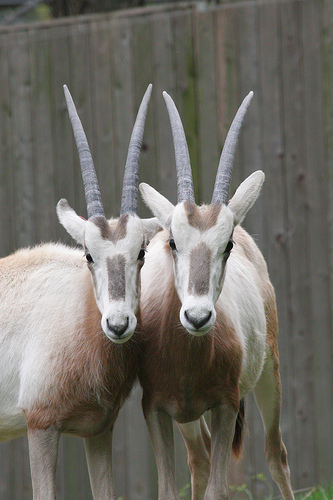What's New at the National Zoo this Spring
Zoo's Boasts Baby Boom, New Food Vendor and a New Exhibit
Visitors strolling through the Smithsonian's National Zoo one of these beautiful spring days will see a variety of baby animals, some new faces and enjoy an entirely new food experience. Below are just a few of the new critters and experiences visitors can expect. More than 30 animal demonstrations take place every day in which visitors can encounter fascinating creatures and chat with keepers about the Zoo's conservation efforts.
- Baby Bird Bonanza Catch a glimpse of some of the world's most endangered birds and their chicks up-close at the Bird House. A baby boom officially began March 7 when a brown kiwi hatched from his shell. The Zoo's flock soon expanded to include a wattled crane, two Guam rails, three rheas and two sunbittern chicks. They're growing fast, so bird watchers should plan to visit the Bird House in the next few weeks. Soon, the wattled crane chick will be six feet tall!
- See Some Impressive Tortoises For the first time in its history, the Reptile Discovery Center will exhibit impressed tortoises. Not much is known about these reptiles, so Zoo biologists will study their growth and behavior. The two sub-adult males sport golden brown and black patterned shells, but this beauty has also made them vulnerable to extinction. Along with habitat loss, the pet trade contributes to the population decline of impressed tortoises in their native Thailand, Malaysia and Vietnam.
- Zoo-perior Food An entirely new dining experience awaits visitors at the National Zoo thanks to its new food partner, Sodexo. Cafés and concession stands will serve a wide variety of authentic ethnic cuisines, as well as healthier versions of traditional favorites. What's more, ingredients are local, seasonal and sustainable. The menus for six food service stations are available on the Zoo's website.
- New Neighbors at the Cheetah Conservation Station Two young scimitar-horned oryx named Sweeney and Omar are the newest residents at the Zoo's African savanna exhibit. These large desert antelope sport horns that are several feet long and resemble a long, curved scimitar — a type of Arabian sword. The half-brothers were born at the Smithsonian Conservation Biology Institute in Front Royal, Va., last year. Native to northern Africa, scimitar-horned Oryx are considered extinct in the wild by the International Union for the Conservation of Nature.
- The Inside Story For an in-depth perspective on why animals behave the way they do, stop by the Small Mammal House this May and check out its new exhibit: The Inside Story. Learn how anteaters eat without any teeth, how a Prevost squirrel nimbly jumps from branch to branch, and more. Artifacts and x-rays of animals' skulls, muscles, and tails will show visitors how adaptations help animals survive in a changing world.
Visitors are encouraged to take public transportation to the National Zoo. Parking lots fill up by mid-morning and then free up early afternoon during spring and summer. Last admittance to the Zoo is 7 p.m. To reserve a parking space 48 hours in advance, call Friends of the National Zoo Guest Services at 202-633-4486 between 11 a.m. and 3 p.m. Monday through Friday. Parking reservation fees of $25 for FONZ members and $30 for nonmembers apply.
Photo Credit: Smithsonian's National Zoo

